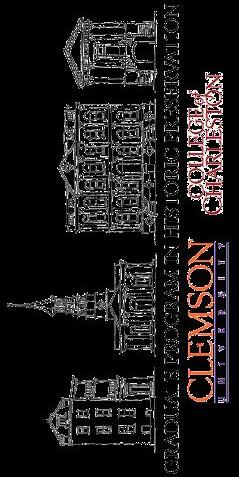




Dear Program Family and Friends,
Greetings from Charleston, where we are wrapping up our Prequel week and ready to start the Fall semester. As I look back on my third year as director, I am beginning to appreciate the fact that our program has its own wonderful and dynamic identity – one that is shaped by the diverse personalities of our student cohorts, faculty, and staff. At the core of this identity is our commitment to hands-on learning and community partnerships, but every year brings new opportunities and challenges that shape who we are as a program. Perhaps most importantly, each year is bookended by the twin joys of welcoming a new batch of passionate budding preservationists in August and graduating a new cadre of (lightly) seasoned preservation professionals in May. First-year students completed an investigation of a 19thc. domestic dwelling on private property in Green Pond. The building contained evidence of occupation from the mid-19th through late 20th centuries, and the students did a great job uncovering its history through investigations of construction techniques, hardware, building modifications, and decorative finishes. We look forward to utilizing this amazing property as our “classroom” for years to come. As part of our cultural and historic landscape preservation course, first-year students also documented the historic Evergreen Cemetery on James Island. In addition to completing their rigorous thesis projects, second-year students took a deeper dive into investigations during their Historic Structures Report course. Their project building was 81 Cumberland St. - the building behind Charleston’s well-known Powder Magazine. Thanks to a grant from the National Park Service’s National Center for Preservation Technology and Training, our second-year students also got to work on an incredible project with our partners at Drayton Hall (including program alumna Trish Smith) and the expert staff at Warren Lasch Conservation Center (including program alumna Claire Achtyl and Jackie Don). This was a semester-long study of non-invasive techniques for monitoring a historic plaster ceiling at Drayton Hall. The program was also awarded two large grants for community-based preservation projects. The first project, funded by the Gaylord and Dorothy Donnelley Foundation, is a collaborative project with staff at Warren Lasch Conservation Center. We will provide collections management training for staff and volunteers at the Seashore Farmers Lodge in the historic community of Sol Legare. The second project is supported by a grant from the Vernacular Architecture Forum. Together with partners from Avery Research Center for African American History and Culture, the Gullah Geechee Cultural Heritage Corridor, the Progressive Club, and Claflin University, we are conducting a community-based historic preservation field school that will focus on researching and documenting late 19th and early 20th century public buildings and their role within the African-American community on John’s Island.
Unfortunately, we also grieved the loss of one of our students, Kelly B. Bulak, who passed away in November. Her unwavering optimism, love of learning, and determination to remain in our program during her treatment serve to highlight how special she was – a true inspiration to everyone in our program.
Please enjoy the content of this newsletter. As is tradition, the writing is all done by our students about their work. The stories have been compiled and edited by second-year student Jacquelyn Nahman. I will close with one last important note about identity – beginning this Fall, the graduate program in historic preservation will fully be part of Clemson University. As we move forward, there will be no substantive changes to the program other than affiliation. The foundations that have made us a leader in graduate preservation education - our intensive curriculum, expert and passionate faculty, hands-on teaching philosophy, and world-class location in Charleston will all remain the same. We will always honor our unique history as a joint program with the College of Charleston, and we look forward to continuing our relationship with the faculty and students of their undergraduate program.
Please join me in wishing our students another successful year. I, for one, cannot wait to see what it brings!
Regards, Dr. Jon Marcoux


1
/ View from the Clemson Architecture Foundation Villa in Genova, Italy. 2

Students visiting North Tibwin Plantation in Awendaw, SC.


Students participating in GPR work at a private residence.
Visit to the Brick Baptist Church in Beaufort, SC during Fall Trip.
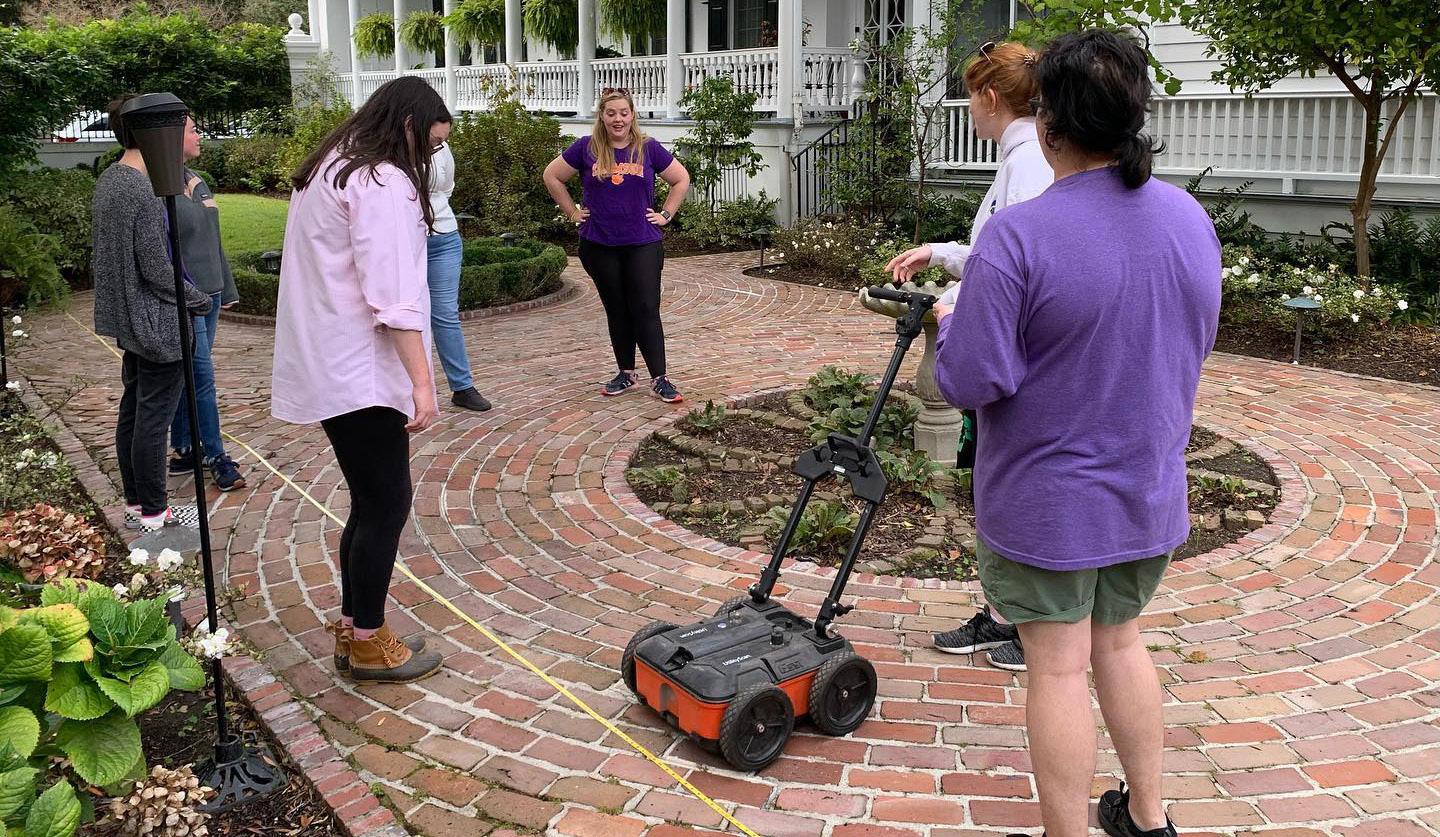
5 / / Students in front of the Genova sign in Piazza De Ferrari, Genova, Italy.

6 / / First Year site visit to KKBE’s Coming St. Cemetery in Conservation Lab.
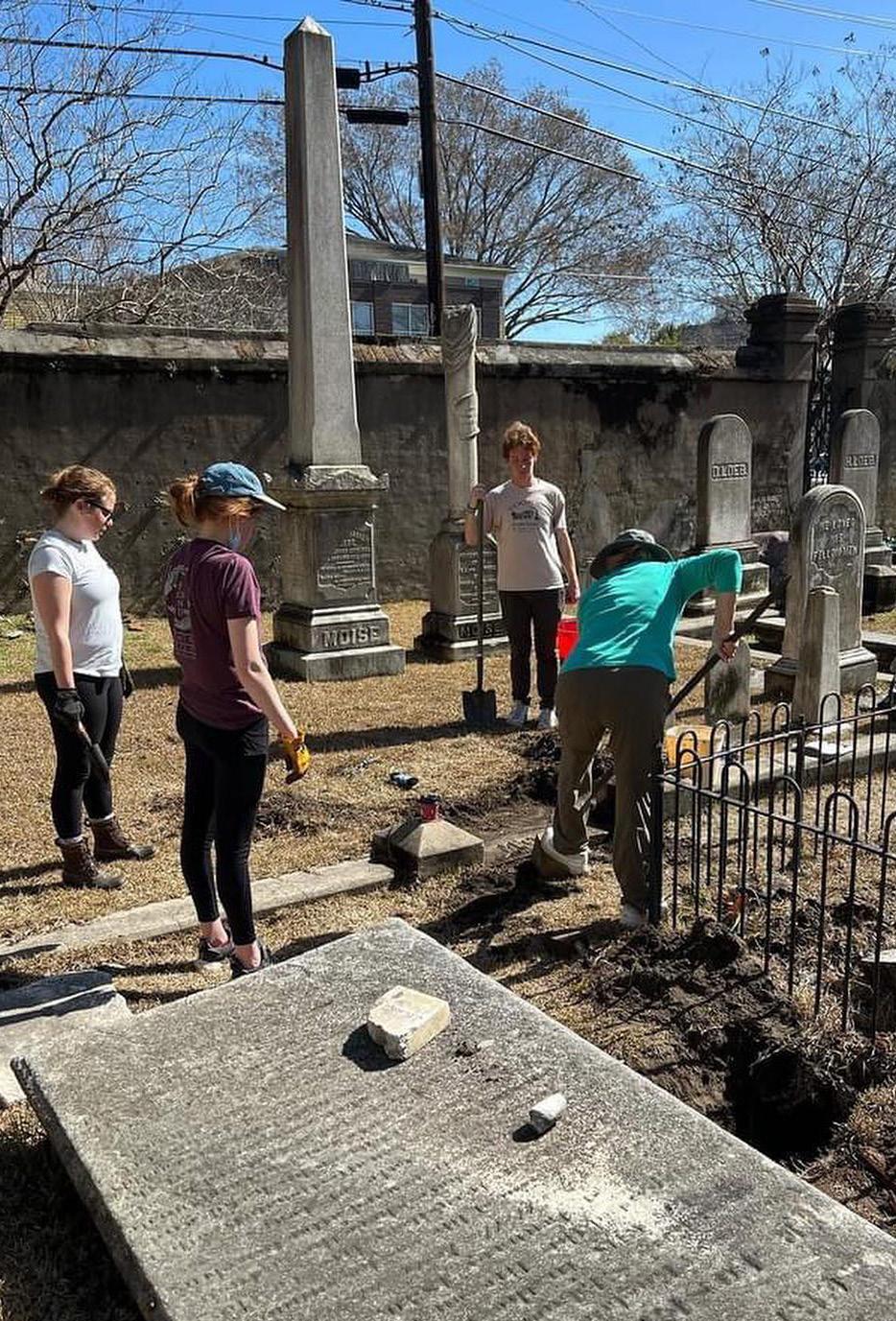
7 / / Students Riley Morris, Brandon Gunn, and Shea McEnerney at Clemson’s main campus to present their work.

8 / / Building Technology and Pathology class site visit to Wickliffe House.
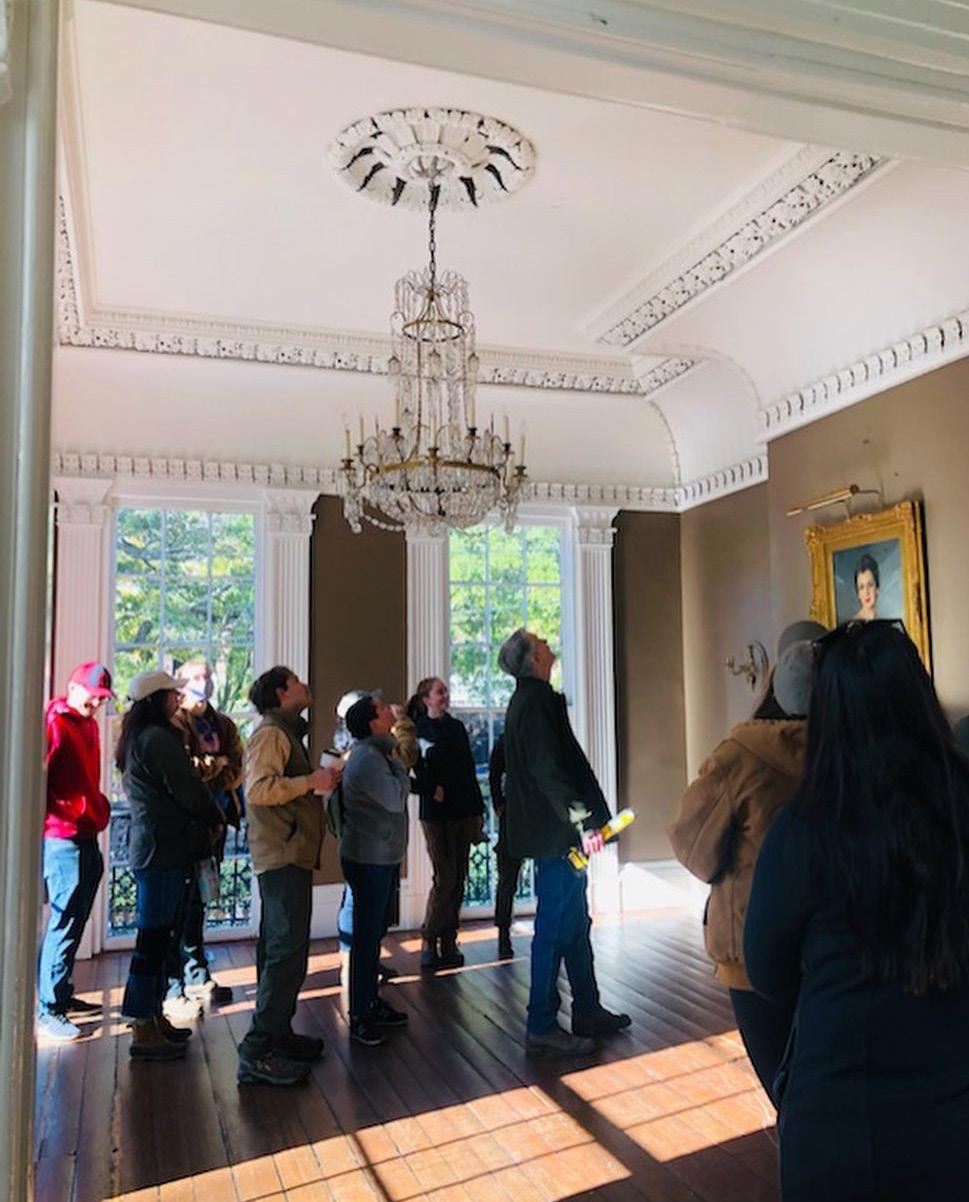
During the Fall 2021 History and Theory of Historic Preservation class, students were split into three groups and assigned to work at South Carolina Society Hall, Mount Zion AME Church, and the Huguenot Society of South Carolina in Charleston to write a Preliminary Information Form (PIF), an informational form that makes a case for a site’s eligibility on the National Register of Historic Places (NRHP). This project required both research and field visits. Students captured photographs of the site and created interior and exterior architectural descriptions, as well as a statement of significance that conforms to one of four required standards outlined by the NRHP. Once the forms were completed, they were sent to the South Carolina’s State Historic Preservation Office (SHPO) for nomination review. South Carolina Society Hall, pictured here, received a letter back from the SHPO confirming its eligibility for the NRHP and students are currently working on the rest of its nomination.

Built in the 1730s, with additions in 1824 and 1994, the Preliminary Information Form sent to the South Carolina State Historic Preservation Office argued
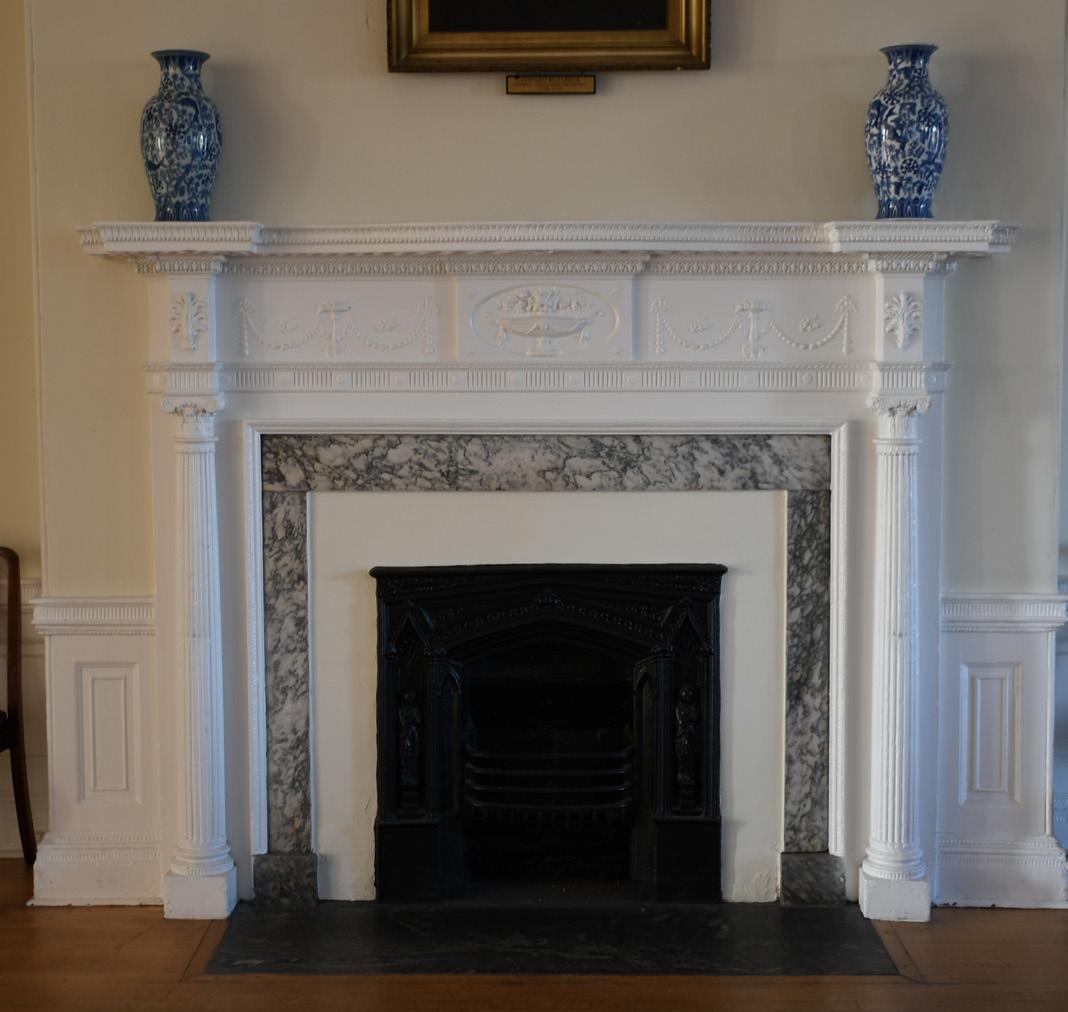
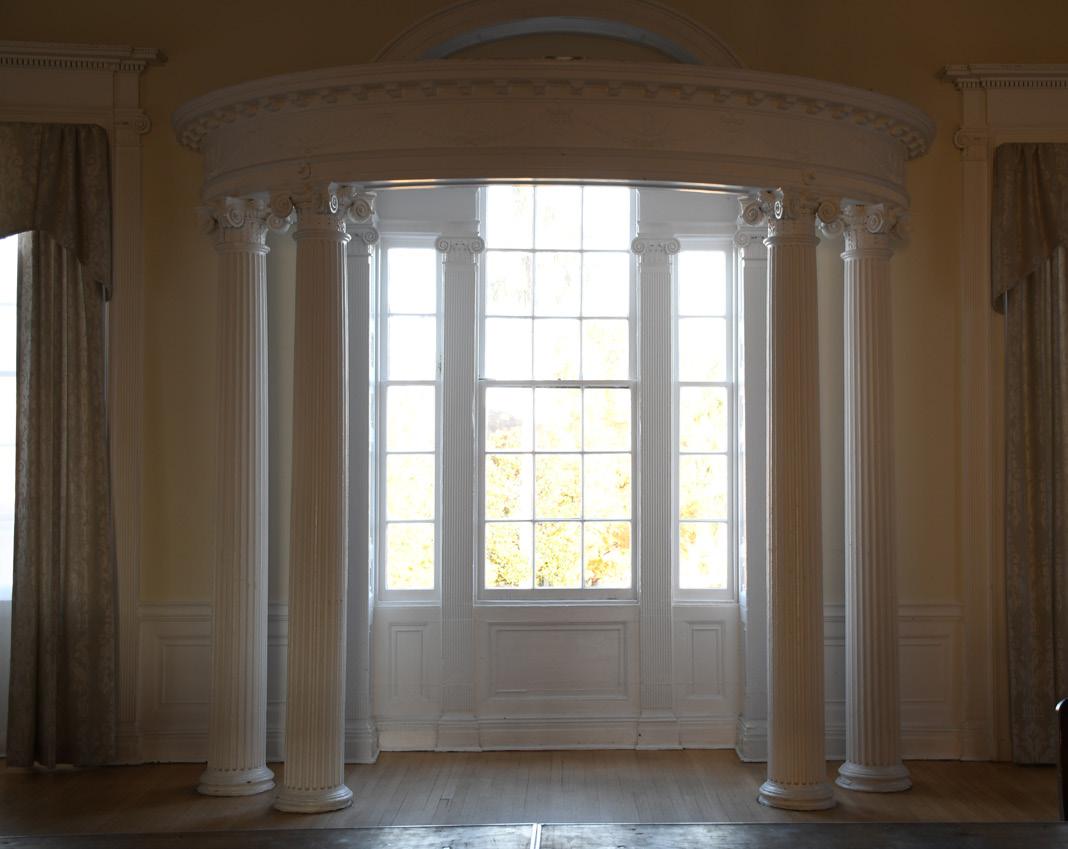
“This PIF proposes the South Carolina Society Hall meets National Register significance under Criteria A and C. In accordance with Criterion A, the South Carolina Society Hall has great significance in not only the development of the city of Charleston, but also America, most notably in its influence on the creation of benevolent societies in the colonial era. The South Carolina Society Hall houses both the South Carolina Society and the first Scottish-American society in America, St. Andrew’s Society. Both societies and notable members have made various educational and charitable contributions that have aided Charlestonians since 1729, in theme with other benevolent societies across America. Another significant aspect of the South Carolina Society Hall is under Criterion C as it was designed and built by a master of the Adamesque architectural style, Gabriel Manigault.
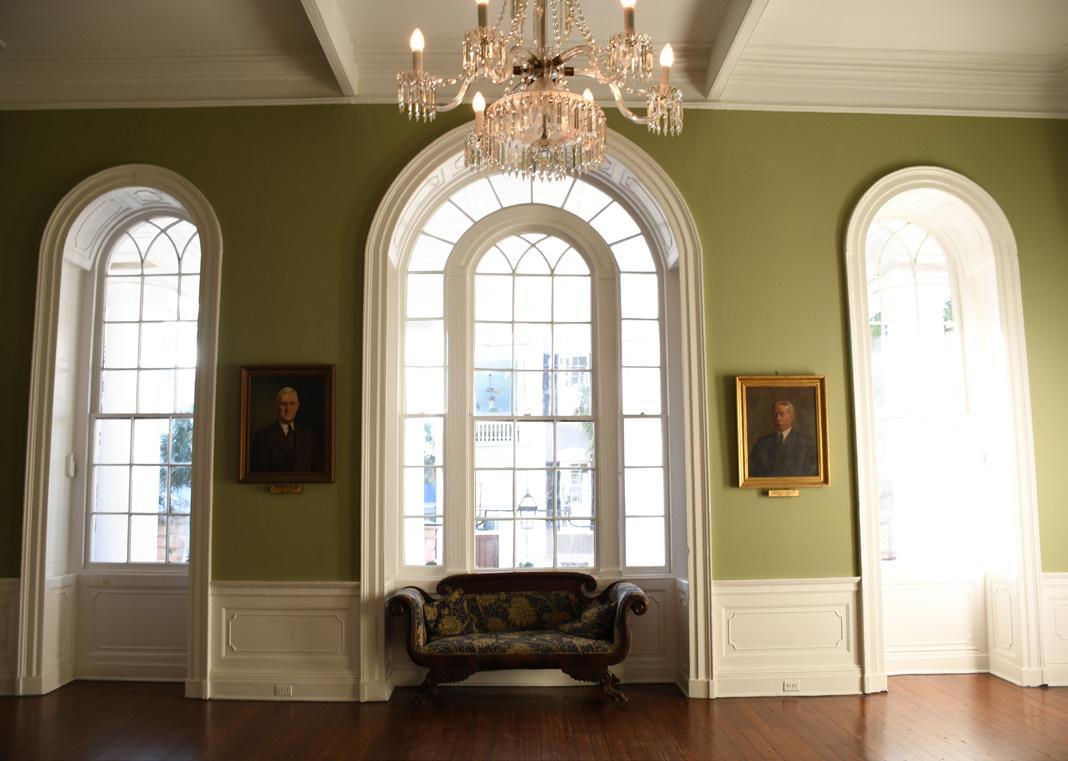
One extensive property offered fieldwork for two of the MSHP classes in the Fall of 2021. First year students recorded and investigated the dwelling pictured here, and second year students enrolled in the Advanced Conservation elective course worked at the recently re-discovered cemetery. Photographs of dwelling and cemetery by Chase Pilcher and Patricia Plohen. Photograph of first year students by Professor Amalia Leifeste.



In the Fall semester MSHP students had the opportunity to document an antebellum house and burial ground on the land of a former plantation in Colleton County, South Carolina, Through the time spent on site during weekly visits and further research and analysis back at the studio the first year cohort created a full report on the house which included measured drawings, paint analysis, and conditions assessments, and the second year Advanced Conservation class created a report based on the data and information they collected at the cemetery, complete with the mapping of the burials and conditions assessments of the markers.
There is a deep history rooted in sites like this that is often overlooked. The research, conservation, and documentation work the students completed was important because of the lack of documentation at sites of enslavement. The difficult history of the case study house and cemetery meant that students were developing technical skills, and also grappling with questions of how to preserve and hypothetically interpret the history of these privately held historic resources to the owners.
This memorable experience granted the MSHP students the opportunity to gain experiences in different methods of documentation as well as the conservation of a landscape familiar in the South’s past not often seen today.

Help us document! Scan the QR code to access the Survey123 web app.
 James Island, SC Spring 2022
by Lexie Allen
James Island, SC Spring 2022
by Lexie Allen
In the spring semester, first-year students had the opportunity to document a historic Black cemetery under the direction of Dr. Jon Marcoux in their Cultural and Historic Landscape Preservation course. Tasked with documenting a designed landscape, the case study focused on the James Island, SC community with the goal of mapping Evergreen Cemetery and recording information regarding each burial for public access.

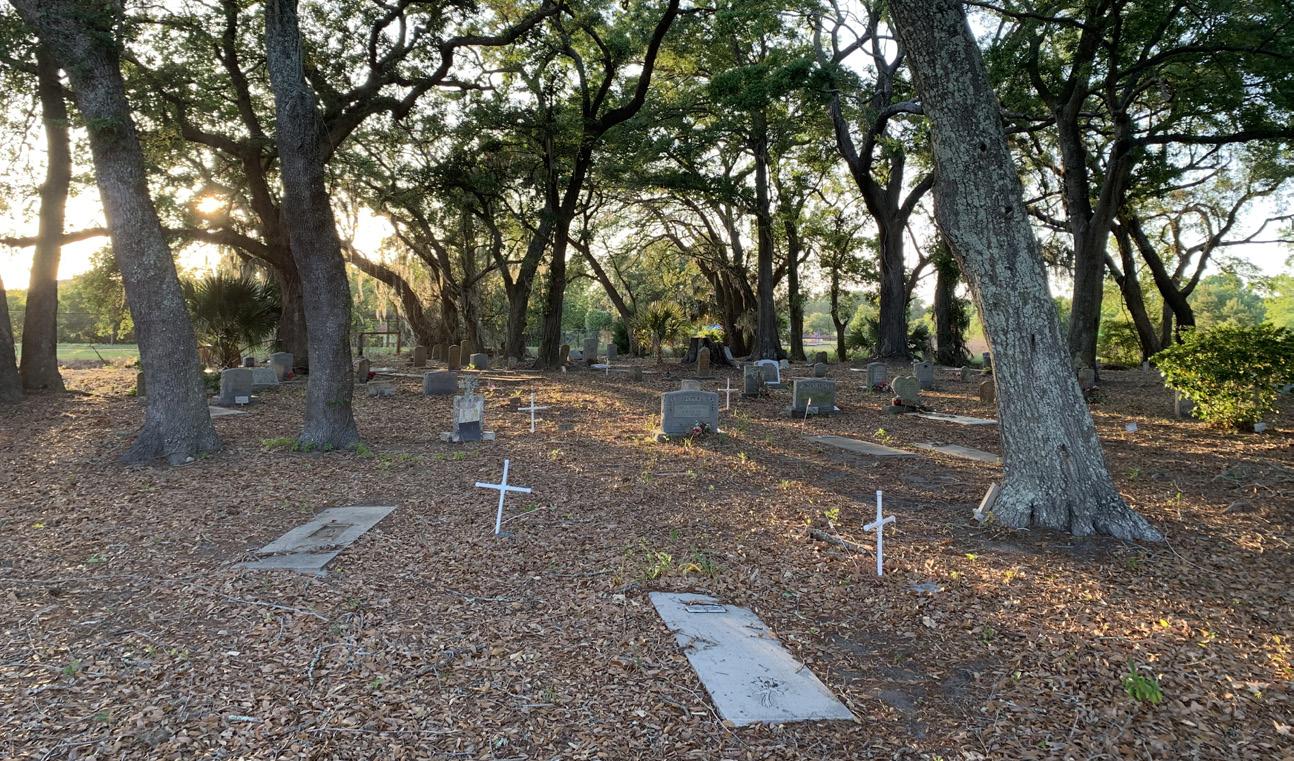
The documentation of Evergreen Cemetery began with the Charleston Public Library’s South Carolina Room Assistant Manager Lish Thompson, South Carolina Room Library Generalist Charlotte Smith, and James Island Councilwoman Anna B. Johnson. With their guidance, students used mapping and surveying technology including laser scanning with a total station, GPS collecting, and the Survey123 app. Each student transformed the recorded data into a digital measured drawing.

The class then split into three groups to tackle three final tasks. The history of historic Black cemeteries, their impact on communities, and other examples of their public documentation were analyzed and presented in ArcGIS StoryMaps. Another ArcGIS StoryMap was composed to give the maps students created of Evergreen Cemetery meaning. A social history of an important family, the Chisolm’s, to the local community was studied, as well as their burial kinship patterns, thanks to Barbara Goss-Brown, a pioneer in the James Island community to preserve its historic Black community legacy. This project wrapped up after the completion of an app and detailed instruction manual that would allow the public to actively engage in documenting historic Black burials nationwide.
using Total Stations and the Survey123 app.
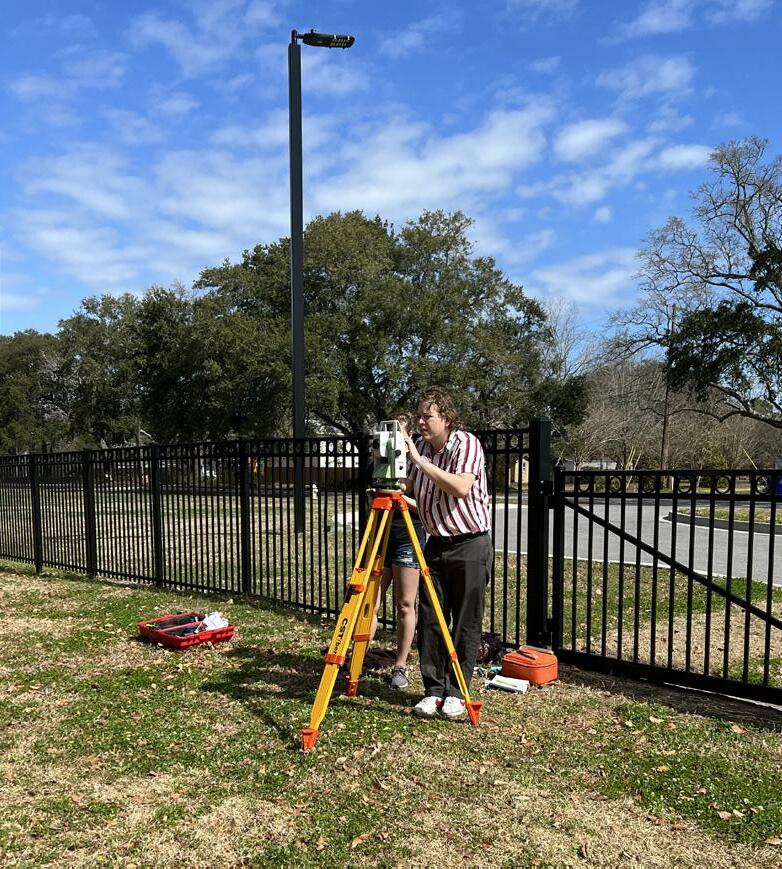


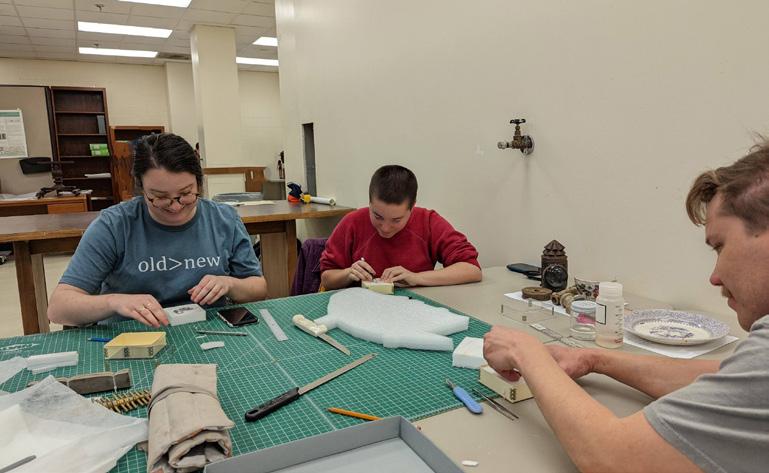
 by Patricia Ploehn
by Patricia Ploehn
During the Spring 2022 semester, second year students in the HP8920 Collections Management & Conservation course were given the opportunity to gain hands-on experience in museum collections management and object conservation from Clemson faculty and staff at the Warren Lasch Conservation Center. Professors Johanna Rivera and Stépanie Cretté provided students with foundational information on collections management as it pertains to museum object collections and a general overview of conservation treatments for inorganic and organic materials that are frequently found in museum collections. Students learned how to create Collections Management Policies and Disaster Preparedness Plans and apply those documents to real-life museum collections.
The final project for the course involved creating an object inventory and assessment for a room in the Edmonston-Alston House, a historic hosue museum managed by the Middleton Place Foudnation. Each student chose a room in the house museum, and completed an inventory of the museum objects present in teh room and assessed their conditions. This final assessment was presented to the course faculty and copieis of each final report were given to staff members at the Edmonston-Alston house.

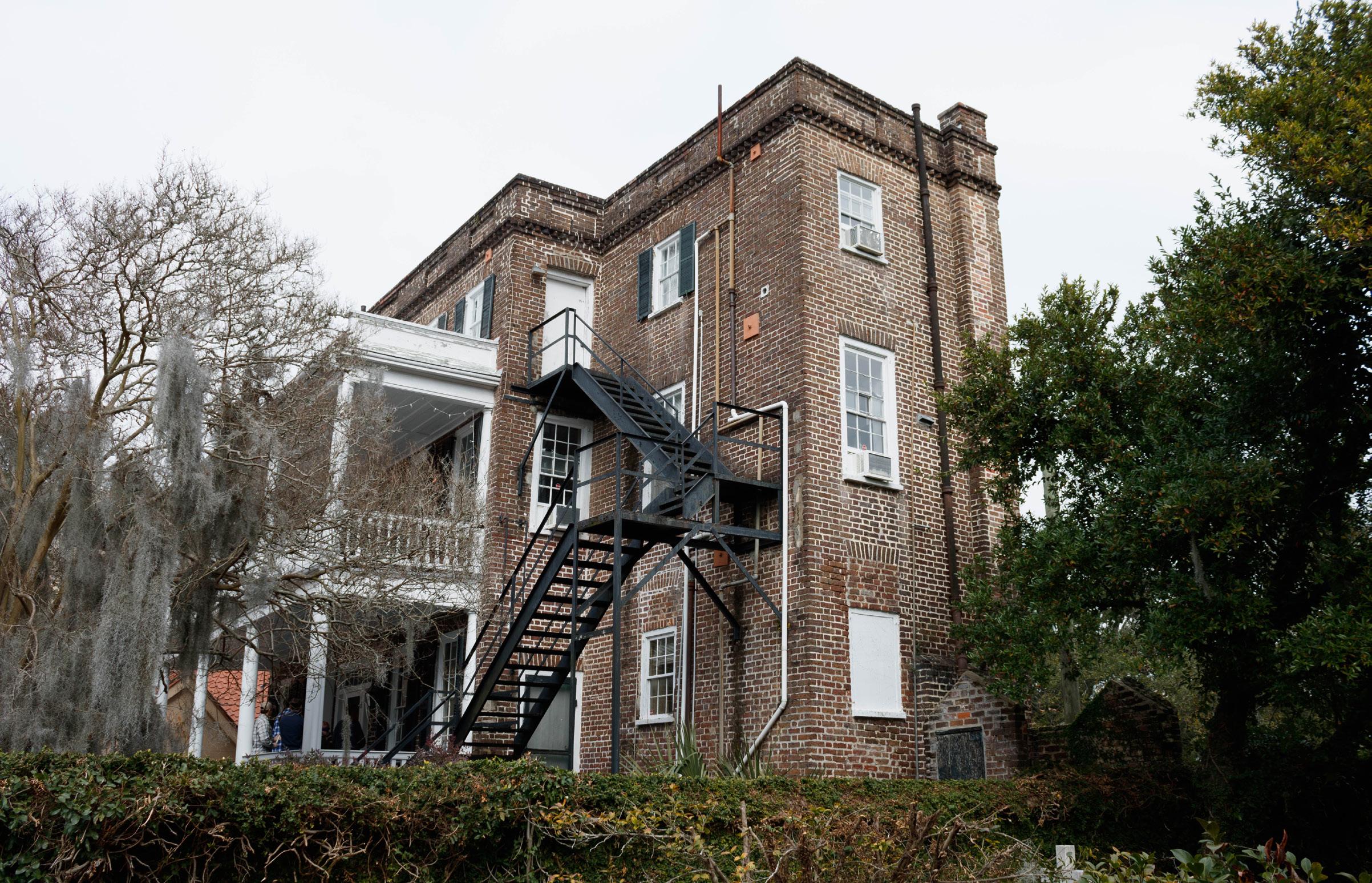 by Isabella Gordineer
by Isabella Gordineer
One of the electives offered to the Class of 2022 was the Historic Structures Report Class. We were extremely fortunate to have Kristopher King teach this class where we studied, documented, and comlpeted a Historic Structures Report on 81 Cumberland Street, also known as the building behind the Powder Magazine. With great help from Katherine Pemberton and the National Society of the Colonial Dames, we were able to spend multiple days on site documenting and studying the structure both on the interior and exterior along with gaining access to their archives. We began with laser scanning the exterior of the structure with help from Professor Amalia Leifeste and later did the same on the interior; some details such as door openings, windows, and shutters required additional measuring. We were able to complete a full set of exterior drawings. Next, we worked on the conditions assessments. We split into teams to complete the conditions categories as laid out in the Historic Structures Report including masonry, windows and doors, piazza, and roof. From these conditions assessments, we were also able to make recommendations for future work on structure. While working onsite, several students also conducted a thorough history of the property, surrounding properties, and people who inhabited 81 Cumberland Street. Two students conducted paint analysis on the first floor, specifically on the doors and trim, which revealed faux graining.
The property has ties back to the Walled City and the Powder Magazine which dates to 1713. Early plats and newspaper articles show a vacant property followed by several structures on the lot. The first mention of the house is on the Bridgens and Allen Map from 1852. Photos from after the Civil War show the structure standing in proximity to the Circular Congregational Church with little damage. Later photos showed the house having structures connected to the east including a bakery and additional tenement structures. This ghost mark of at least one of the previous structures is visible on the side of 81 Cumberland Street. Over time, with the help of historic images, the HSR documented there have been visible changes over time. The piazza was at one point enclosed and then reopened and the internal stair system was moved closer to the front door to allow for bathrooms to be installed on each floor. One area of the structure still requires additional research: the rear portion. Initial observations of the exterior windows not matching up with the jack arches led to the further investigations. Evidence in the basement shows that the current dirt floor is higher than an original wood floor as visible in the floor joist pockets around the interior of the room. Additionally, the hearth of the fireplace is present under the dirt. Our final hypothesis is that the floor system was changed to accommodate a room with interior connection to the main structure. This room is where the Powder Magazine archives exist today. Prior to this floor system being changed, there would have been a basement kitchen with a loft area above. The loft and kitchen did not have internal communication with the rest of the structure. We suggest additional research and archaeology to further understand this area. A student also looked at current market analysis to understand the use potential for the future of 81 Cumberland Street. A real estate analysis looked into similar structures in various categories including residential, commercial, and mixed-use in order to share information as to how to use this structure for the future.
Overall, 81 Cumberland was an early tenement structure of Charleston that represents a key part of the city’s history. The students of the Historic Structures Report Class were very excited to pave the way for more research into this structure and others of similar use in order to better understand the history of tenements in 19th century Charleston.
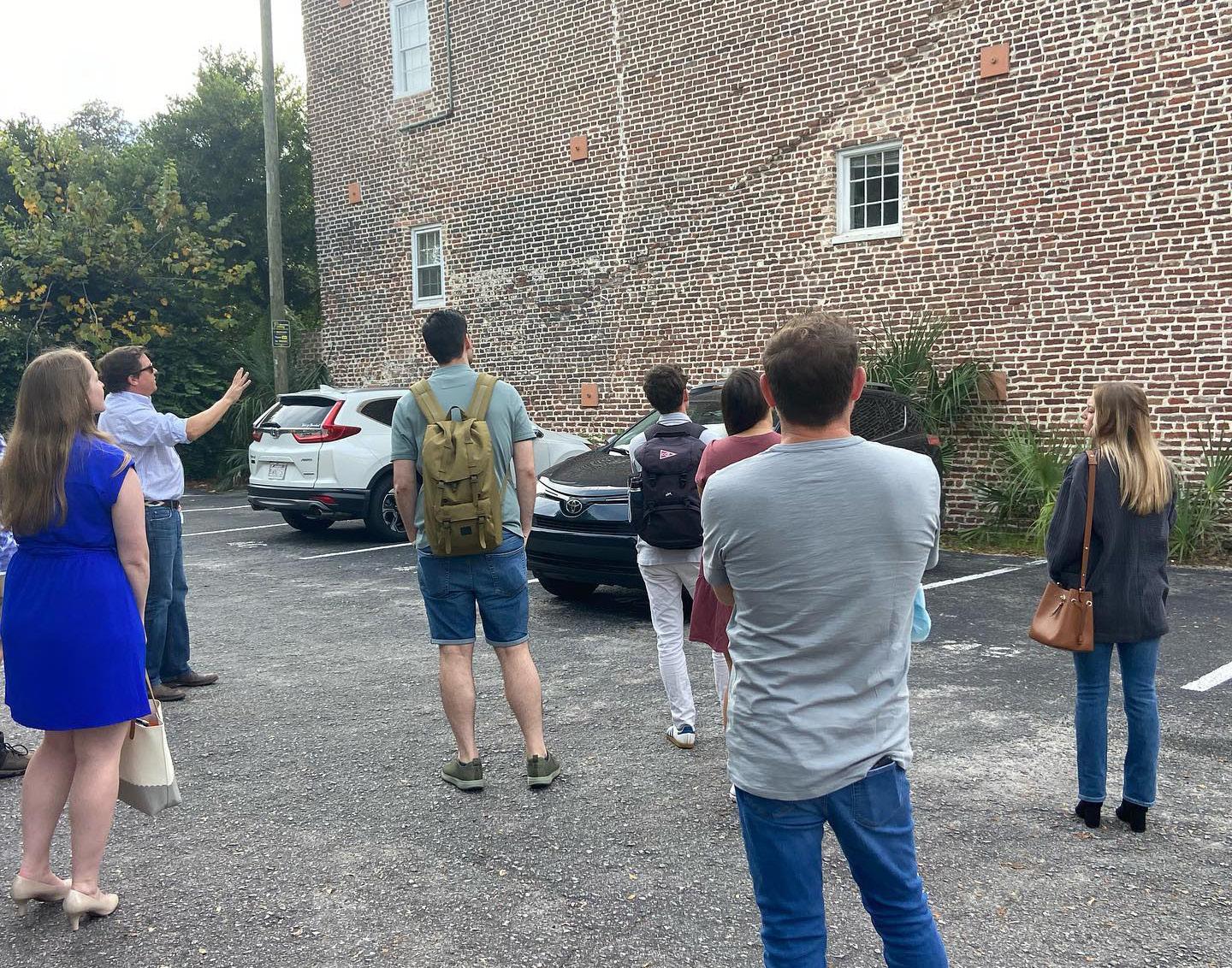
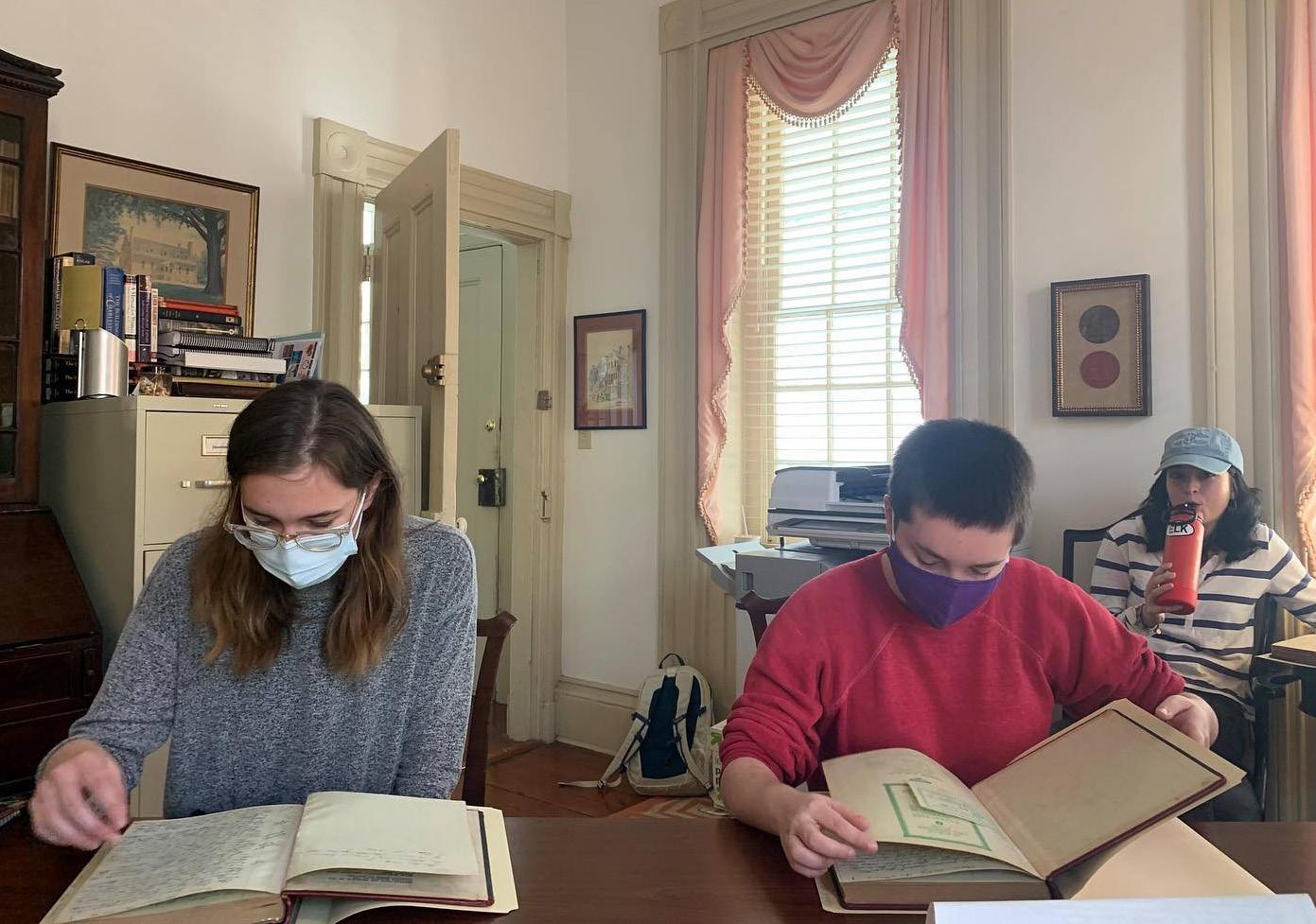
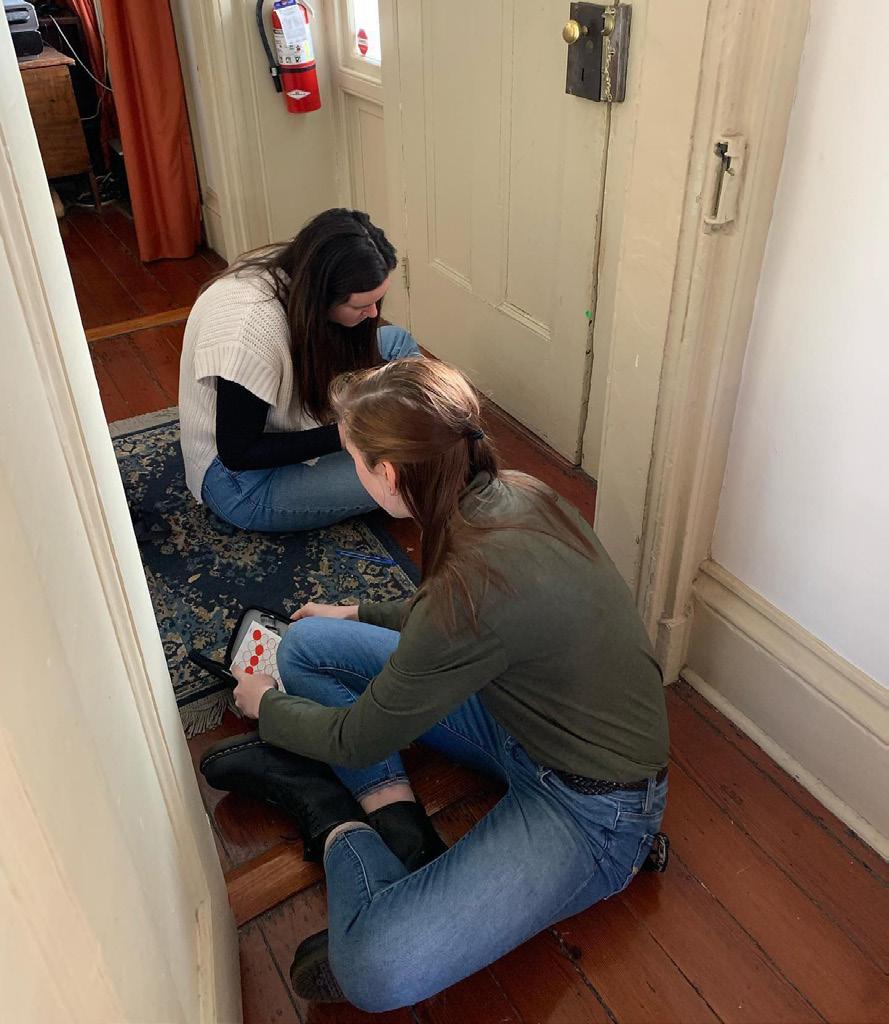


 by Joyce Pope
by Joyce Pope
For Professor Frances Ford’s Conservation Lab, the students of MSHP Class of 2023 split up into three groups, each assigned a historic site where they would gather paint samples to analyze in the Conservation Lab. One group was assigned to the Stony Landing site in Moncks Corner, SC, one group to the William Roper House in Downtown Charleston, SC, and one group to the Joseph Manigault House in Downtown Charleston. Students gathered paint samples from areas that were the most likely to yield a paint chronology that would clearly show how the areas had been painted over a number of years. After gathering the samples, the students hand-polished or machine-cut the cubes and mounted them to slides. At that point students were able to use the CRAIC Microscope to view and photograph the samples. The photographs, along with the students’ observations and conclusions, were then disseminated to the three sites for their use.
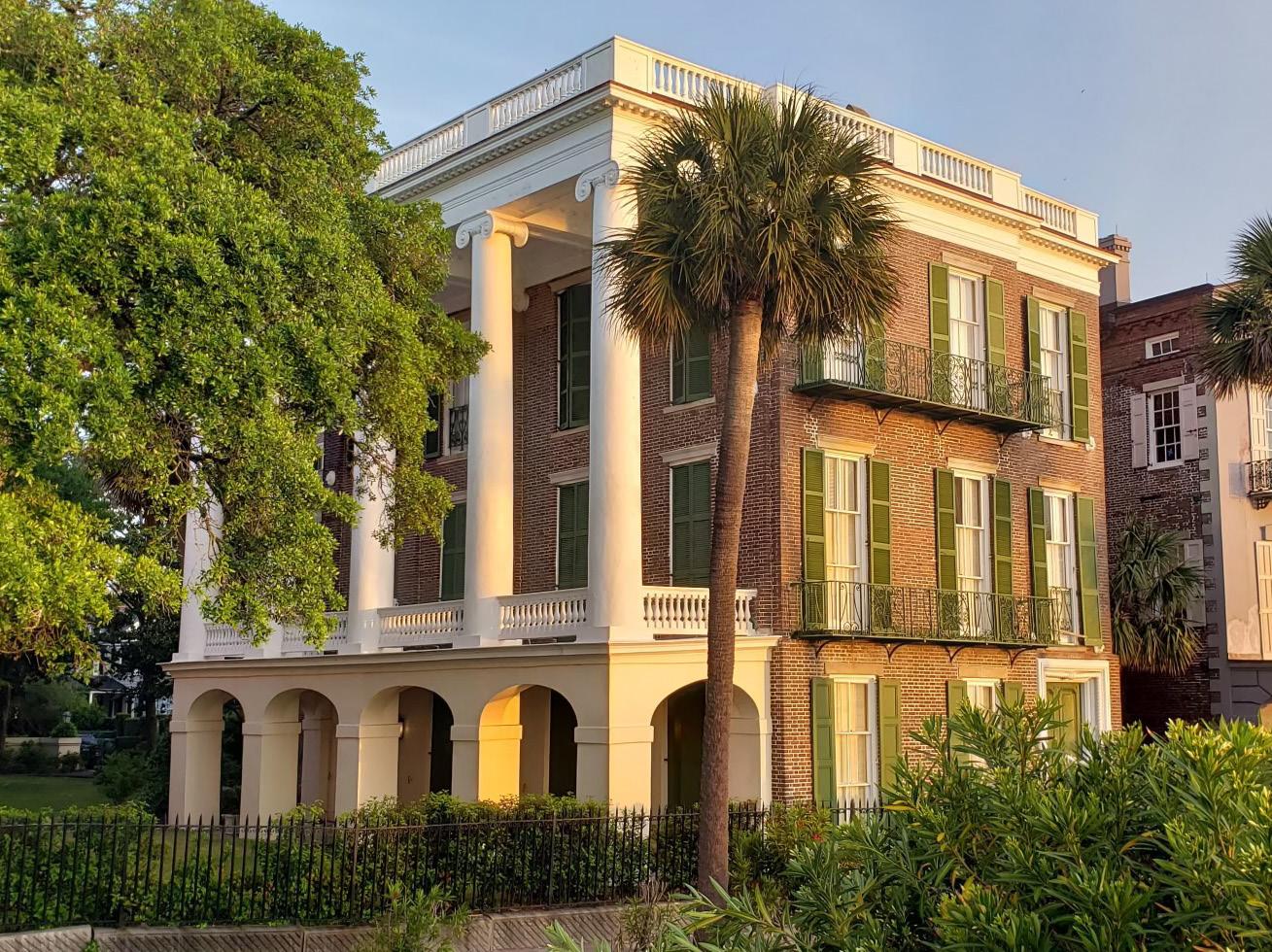
Students Luke Bagwell, Matthew Doohan, Joyce Pope, and Emma Grace Sprinkle took samples from five interior rooms of the Roper House for analysis. A report of their process and findings was compiled for Classical American Homes Preservation Trust. Through their analysis they discovered evidence of repeated paint color layers on some features in the rooms, including window surrounds and baseboards. Another finding of their analysis was a distinctive green color from the door surround of the foyer and a light blue color found in a second floor room.
paint samples in the Roper House.
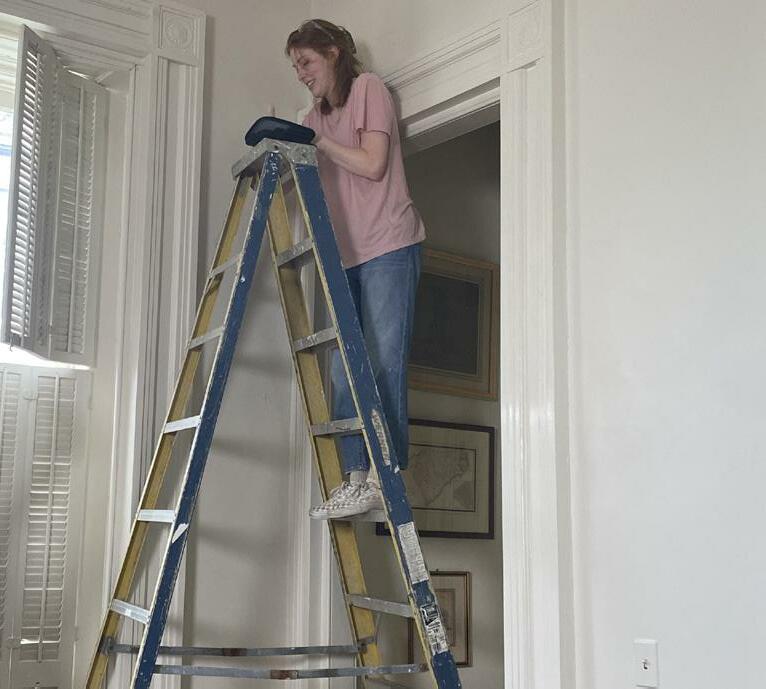
Bottom Right: Photo microscopy of a paint sample. Photo microscopy taken by Joyce Pope, photographs of students taken by Professor Frances Ford and Emma Grace Sprinkle.
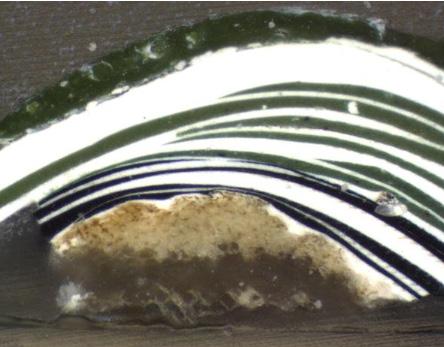
The spring semester for the first year students began in Professor Amalia Leifeste’s Preservation Studio with a documentation project in Pendleton, South Carolina at the Jenkins House. Students documented, researched, and identified the building phases in the now abandoned structure for their final report. They were able to work with Pendleton local history experts Jackie Reynolds and Tim Duke who provided invaluable insights into the local history and building phases of the Jenkins House.
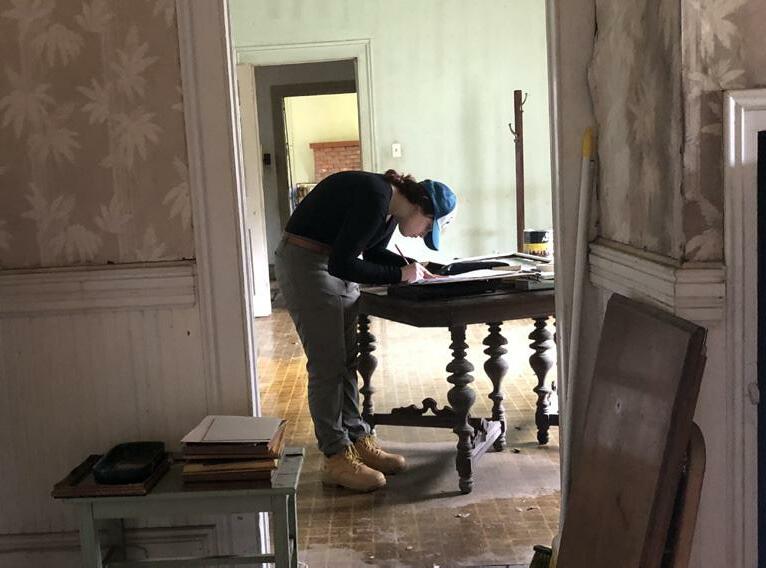

Students utilized a 3D laser scan of the interior and exterior of the Jenkins House in addition to field measurements to produce AutoCAD versions of the floor plan, exterior, and interior elevations of the building to HABS standards. While documenting an assessment of construction methods and materials was conducted in order to be able to analyze the building phases of the Jenkins House as well as the feasibility of moving the structure. Students also created a site plan for a more complete documentation of the context of the Jenkins House. A total station was used to document important features of the site, such as the placement of the house, garden fence, ancillary structures, and important landscaping. Through the investigation and documentation of the Jenkins house the students learned that there were four main building phases, the first being a double parlor with central hall floor plan built in 1837, the second, third and fourth comprising three separate sets of additions made to this core without exact dates able to be determined.
In a theoretical argument about whether or not the Jenkins House could be relocated, the students determined the preservation theory suggests that invaluable integrity would be lost with the loss of context, particularly if the outbuildings close to the main house were not relocated as well. However, the students determined that if it is to be relocated in order to preserve the building it would need to be stabilized and partially disassembled to move the one story timber framed building, and more structural analysis would be necessary.

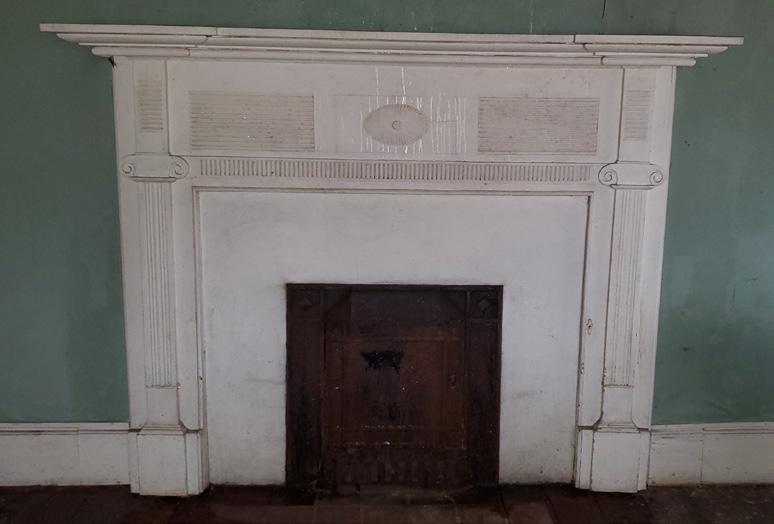


 by Elizabeth Bellerson, Nicole LaRochelle, & Riley Morris
by Elizabeth Bellerson, Nicole LaRochelle, & Riley Morris
Students and others using infrared thermography and other technology to assess the condition of Drayton Hall’s ceiling.



Photographs by Professor Amalia Leifeste.
The focus of the Spring 2022 Advanced Instrumentation class taught by Professor Amalia Leifeste, Claire Achtyl, Jacqueline Don, and Patricia Lowe Smith, was the application and assessment of several non-destructive evaluation (NDE) techniques, for use in assessing the condition of Drayton Hall’s Great Hall plaster ceiling. The current ceiling in the Great Hall was likely installed between 1850 and 1860. Since the National Trust for Historic Preservation acquired Drayton Hall in 1974, there have been two major preservation campaigns for the ceiling, the results of which make assessing the condition of the ceiling by more traditional means, such as plaster-sounding, difficult.
The NDE techniques selected for evaluation included photogrammetry, laser scanning, ground penetrating radar (GPR), infrared thermography, and x-ray. For each technique, experts in the field were brought to Drayton Hall to test the technique on both a mock-up plaster wall constructed by the American College of the Building Arts as well as on the Great Hall ceiling.
The photogrammetry and laser scanning, conducted with the assistance of Nick Nelson Delong of Clemson University’s Warren Lasch Conservation Center and Kalen McNabb and Betty Prime from Meadors, Inc., provided documentation of the deflection, with varying success by specific techniques, which in theory can be used as a baseline from which to compare future documentation. However, this technique did not provide immediate results as to the stability of the ceiling.
Infrared thermography and GPR evaluations were conducted by Charles Bransby-Zachary and Maris Franco from CBZ Consulting, Inc. Although these techniques were able to tell us about the location
of cracks and joists, neither could conclusively tell us where plaster delamination was occuring. Some of the cracks did allow heat to disperse, which infrared thermography picked up on, and this provides some clues to the condition of the ceiling, but overall, more analysis of the data from these techniques needs to be done before we can definitively determine their efficacy.
The application of x-ray technique to historic plaster ceilings was investigated with assistance from Abhinav Singh of Pacific NDT. While on-site x-ray evaluation was not performed during the course of this study, the ability of the technique to yield useful results was discussed in detail. X-rays are a useful evaluation method because there is limited subjectivity associated with results, it can be used digitally thus making it highly portable, and it can identify layered or stacked elements in differing grayscales, allowing one to see the entire assembly. X-ray imaging of the plaster ceiling would be able to detect the location of metal elements in the Great Hall ceiling as well as any corrosion present. The technique may detect voids or air pockets which may be highly useful in determining the attachment of the ceiling to the lath. Limitations of the technique include the inability to detect small cracking and the depth of objects, including voids and air pockets. Overall, we think these techniques could feasibly work on a different ceiling, especially one that has had less documentation and less work done than the Great Hall. These techniques were able to identify where joists were in relation to cracks, which confirmed that the cracking was largely due to structural issues in the building. However, we were unable to conclusively determine the stability or predict the longevity of the ceiling from these tests. It was an incredibly valuable experience to see how professional projects are managed and executed. Furthermore, under the guidance of experts, we were able to experience a variety of non-destructive techniques and analyze their performance, providing a rare opportunity to see real techniques in action and evaluate their success on a historic ceiling. The ability to analyze non-destructive techniques on historic materials provides us with invaluable experience in future preservation efforts, as we can apply the same analysis on many other techniques and historic projects. As a project funded through a grant, we also gained an understanding of how grant-funded projects function in regards to timeline and deliverables. Through this multifaceted course, we corresponded with professionals throughout the nation, learning how their different techniques worked and how their businesses operated, and developing methods for thorough analysis. This course provided us with several experiences that will serve us well throughout our careers as Historic Preservationists.

Our time with Kelly was brief, but the profound effect she has had on all of us is a testament to the life she lived.

To begin with, I don’t think anyone can forget meeting Kelly – so friendly, engaging, and genuine. Kelly came to our fall open house in 2019. As an historic preservation program, we tend to attract students who are interested in the past, but it was clear upon meeting her that Kelly had more than an interest – she had a true love of old buildings. Her ease and professionalism were also memorable, as was her experience working in interior design. My colleague Amalia was excited at the prospect of having Kelly join us. I, on the other hand, thought our chances of landing Kelly were remote, as she seemed very happy in her current job. It came as a very pleasant surprise, then, when she reached out that summer to express interest in the program- we luckily had a spot open for the Fall and signed her up as soon as we could.

When Kelly was diagnosed, we met and she was clear that her education was her priority. She promised to make every effort to avoid falling behind in her coursework. I can honestly say that she held true to this promise throughout her entire time with us. In fact – she excelled. Kelly’s passion for historic buildings and their stories, particularly those associated with Charleston, fueled her contributions to documenting a number of important historic sites including Mt. Zion AME Church, Caw Caw Interpretive Center, and McLeod Plantation. For McLeod, Kelly edited a lengthy National Register of Historic Places listing update, working weeks past the end of Fall classes to deal with a nit-picky professor’s comments (my comments). And she did this with all the grace you would expect of her.
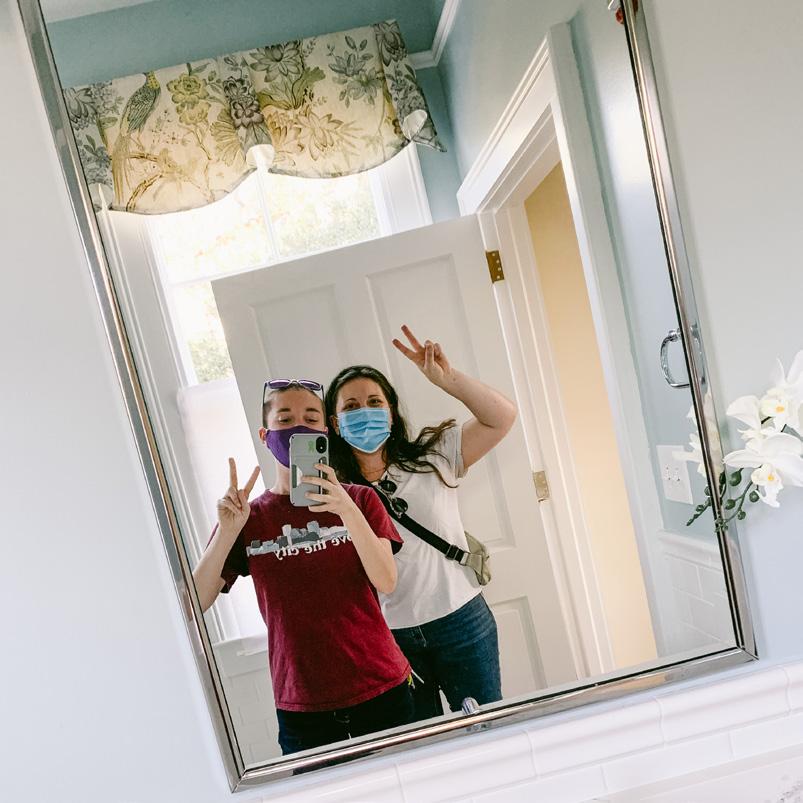

Over the summer, Kelly had not one, but two internships in Charleston. She researched the histories of a number of important buildings as part of a largescale rehabilitation of the Charleston Navy Base. She also worked with us to put on a national historic preservation conference this past summer. Kelly jumped right into the fray, dealing with dozens of minute conference details, coordinating student volunteers, and handling the questions and requests of conference attendees. She was there every minute of the event, from set up to cleanup, and I cannot imagine pulling it off without her. She continued her work on both of these summer internships long after she fulfilled the time requirement. Just about a month ago, I had to break it to her that we ran out of work for her on the conference internship.
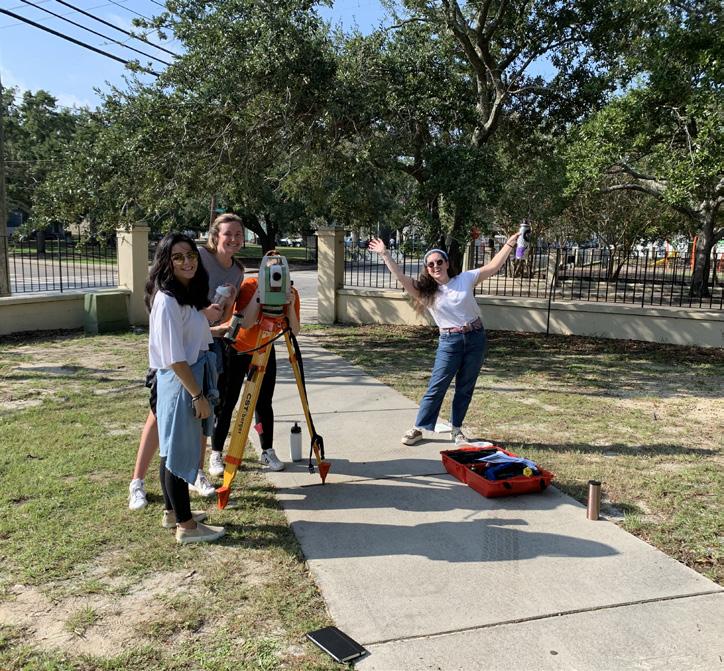
In addition to this amazing work ethic, Kelly also brought to the program a deep sense of optimism and hope. For her masters thesis project, she could have chosen to stay in her realm of expertise, researching historic interiors. But instead she ventured into a much different topic – choosing to explore the ways preservationists can fight gentrification and displacement. This project required her to take on a body of very challenging literature and learn a number of complex study methods. She did all this joyfully because she recognized the potential of her project to help people.

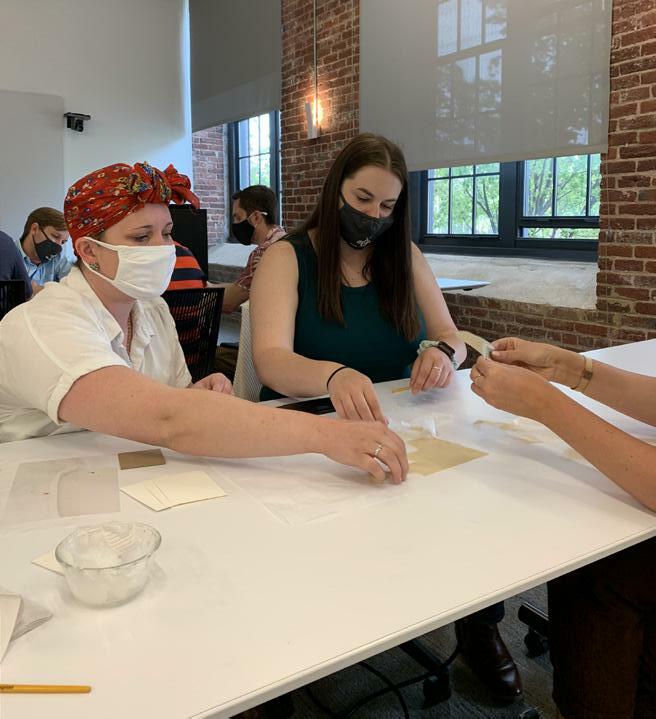

With Kelly’s passing, a brilliant light has gone out, and historic preservation has indeed lost a most passionate and promising advocate for the past and for people. More than this, Kelly was genuinely one of the finest human beings I have ever met. Her grace, unwavering optimism, and love of learning serve to highlight how special she was, and I am proud to call her a colleague and friend.

Elizabeth Bellerson: The Industrial Landscape of Charleston, South Carolina From 1884 to 1955.
Jessica Chunat: Partner in Historic Preservation: Local Intervention and the Retention of Integrity in National Register Historic Districs in South Carolina.
Travis Galli: Stepping Into the Past: A Spatial and Temporal Analysis of Charleston’s Streetscape Through Imagery.
Isabella Rae Gordineer: Economic Revitalization Through Preservation: A Study of the Effects of Preservation and Economic Initiatives in Five Small Cities in Virginia.
Neale Grisham: Sconce Upon a Time: An Assessment of Drayton Hall’s Period Lighting and its Evidence of Social Hierarchy.
Branden Gunn: The Old Harbor: A Diachronic Study of Charleston’s Cooper River Waterfront, 1884-1990.
Nicole LaRochelle: Cladding by Another Name: A Compariative Analysis of the Environmental and Economic Costs of Traditional Wood Clapboards, Composite FiberCement Siding, and Vinyl Siding.
James McEnerney: The Social Network of Early American Architecture: A Network Analysis of Early Architectural Training In and Out of the Lowcountry.
Riley Morris: A Performance Evaluation of Architectural Coatings to Preserve Aerosol Paint on Concrete.
Patricia Ploehn: Habitats and Heritage: An Analysis of the Natural and Cultural Resource Management of the South Carolina Lowcountry.
Maria Short: “A Beauty in the Kitchen”: The Introduction of the Cookstove as a Mechanism of Change in Charleston’s Historic Kitchens.
Tom Sutton: Before It Breaks Fix It: An Analysis of the Costs and Effects of the European Monument Warch System.

2011
Grace Abernethy is self-employed doing paint restoration work.
Ryan Pierce recently completed his first year working as a 3D Imaging Specialist for the Architect of the Caoitol, where he documents architecture and objects throught the Capitol campus.
2012
Katherine Ferguson works for the U.S. Department of State, Bureau of Overseas Buildings Operations, Office of Cultural Heritage as their General Arts & Information Program Advisor.
2013
Karl Sondermann was assigned as the U.S. Military’s Special Operations Command Central (Middle East) J4Director of Logistics at MacDill AFB last summer. In March 2022 he was notified that he was selected for a promotion to Colonel in the U.S. Army.
2014
Melissa Roach just celebrated three years at Kinco Constructors and works with Historic Cane Hill as their Construction Manager. In her free time she is helping develop an architecturally focused walking tour program of the Cane Hill, AR community, and assisting to create HCH’s building maintenance plan. She was recognized by Arkansas Money and Politics magazine in November 2021 in “Blazing Trails: Women in AEC,” which highlights the top women in the Construction Industry in Arkansas. Melissa lives in her hometown of Springdale with her pups, Betty and Bodie.
Lindsay Usher had twins, a boy and a girl, on Christmas Day of 2021. Their names are Bobby Calhoun Usher and Ellis Austin Usher.
Erin Morton is working as a Preservation Planner for the City of Raleigh, NC.
2015
Lauren Hoopes is working for the New York Power Authority as an Associate Cultural Resource Specialist as of November 2020 and lives with her cat.
Frankie Pinto was recently promoted as the BAR-S Administrator for the City of Charleston.
Justin Schwebler is the Property Manager at Historic Charleston Foundation.
Laure Lee Worrell married Justin Schwebler in October 2020 and are expecting their first child. She works in the buildings and facilities department at the College of Charleston.
2016
Jane Ashburn has been working as a Research Assistant Professor of Architectural Conservation at Tulane University’s Historic Preservation Program since Fall 2021.
Jessica Fortney got a new job as an Architectural Historian for the Eastern Region of the U.S. Forest Service.
Anna Gilligan started a new job as a Project Manager at BE-CI in Destin, Florida.
Meghan White is engaged to be married in Atlanta, GA. The wedding is in October 2022.
2017
Morgan Granger has a new job as an Architectural Historian with Johnson, Mirian & Thompson (JMT) in Florida.
Clayton Johnson graduated in May 2022 with a Masters of Architecture from NC State University and is now working at Mauer Architecture in Raleigh, NC.
2017
Kymberly Mattern is a 7th grade History Teacher at the Chapin School in New York, NY. She uses historic preservation to teach her students about U.S. History and discuss how preservationists, museum professionals, historians, archivists, and indigenous people can collaborate to preserve intangible cultural heritage.
2018
Nathan Betcher is the Historian for the Reconstruction Era National Historic Park.
Sam Biggers is the Director of Preservation Services for Dominion Traditional Building Group, a restoration masonry contractor that serves Virginia, West Virginia, and Maryland.
2019
Dana Marks is working at Maryland Historical Trust as a tax credit reviewer. Sada Troutman started a new job as the Downtown Development Director with the City of Sailsbury, NC and Downtown Sailsbury, Inc. She manages the Main Street program, which is the oldest Main Street organization in the State of NC.
2020
Kayleigh Defenbaugh is getting married in October of 2022. Her company, MacRostie Historic Advisors, was acquired by Ryan, LLC in February 2022. She also consults on historic tax credits in addition to her work as a marketing specialist for their historic preservation services.
Monica Hendricks started working at S&ME in March of 2021. She just started preservation work on surviving indigo vats that were part of Fenwick Hall.
Rachel Wilson earned a commercial drone pilots license and now assists with drone related projects. Ken Marolda completed an Area Character Appraisal for Avondale in November 2021, which was adopted in March 2022. He also co-founded CHS4Ukraine in March 2022.
Gabe Cristofari accepted a job with the Town of Abingdon, VA as their Planner/GIS Specialist in February 2022. He also wrote a blog/article for Classical American Homes Preservation Trust entitled “Discovered Photo Album Illuminates Millford’s Architectural Evolution” for their website.
Lisa Gardiner started her own LLC, Palmetto Preservationist, and has clients all over the country. She is an Architectural Historian and offers National Register nominations, GIS mapping, and historic tax credits, among other services. She created maps of the Revolutionary War in South Carolina that are on exhibit at the Berkeley County Museum. She also made a map of the colonial walled city that is part of Nic Butler’s Blog and continues to aid research into the walled city. Lisa is also an ambassador for the Instagram Account “Cheap Old Houses,” and will be giving tours of their featured houses from an Architectural Historian’s perspective to their over one million followers.
Vito Scocozzo accepted a position as a Historic Preservation Speicalist with the New Jersey Historic Trust, based out of Trenton NJ, where he reviews and supervises grant funded historic preservation work throughout the state.
https://www.clemson.edu/caah/academics/architecture/programs/historic-preservation.html Keep up with us throughout the year by following us on Facebook and Instagram!
